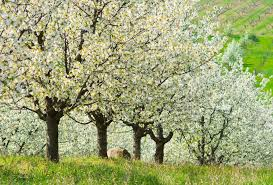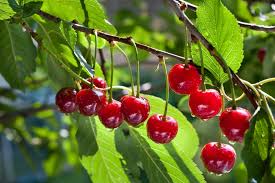Cherries are a delightful treat, known for their sweet, juicy flavor that stains your lips and leaves you craving more. With their irresistible aroma, they offer an indulgent experience, making them a favorite fruit for many.
A Brief History of Cherries
Cherries have a long history, dating back to their introduction in Britain by the Romans. Legend has it that Roman soldiers planted cherry trees along their marching routes, unintentionally creating a trail of blossoming trees. This story highlights the enduring charm of cherries, even in ancient times.
Overcoming Early Challenges in Cherry Growing
Growing cherries was once a daunting task. The trees required cross-pollination from other cherry trees, meaning you needed multiple trees planted together. Additionally, traditional cherry trees grew to massive heights (around 60 feet), making harvesting a challenging and dangerous task. Birds often snatched up a significant portion of the crop before harvest, leaving gardeners frustrated.

However, modern gardening has brought about revolutionary changes. Dwarfing rootstocks like the ‘Colt’ and ‘Gisela 5’ have made cherry trees much more manageable. The ‘Colt’ rootstock keeps trees around 13 feet tall, while the ‘Gisela 5’ keeps them at a compact 6 feet, making them easier to manage, prune, and protect from birds. These innovations make cherry growing much more practical for modern gardeners.
Cherry Tree Training and Types
Cherry trees can be trained in various forms, such as standalone trees, bushes, pyramids, or even fan-shaped against a wall. Sweet cherries are popular for direct consumption, while acid cherries like ‘Morello’ are perfect for cooking, as they thrive in shaded areas.

Choosing the Right Cherry Tree Variety
Many modern cherry varieties are self-pollinating, meaning they can grow successfully on their own. Acid cherries, like the ‘Morello,’ are self-pollinating, making them an easy choice. However, if you’re interested in non-self-fertile varieties like the ‘Merton Glory,’ a delicious early cropper with large yellow fruits, you’ll need to ensure cross-pollination by selecting a compatible variety that flowers at the same time.
Self-fertile varieties such as the deep red ‘Stella,’ compact ‘Celeste,’ and acid-cherry contender ‘Nabella’ are also great options. When purchasing trees, you can choose between container-grown or bare-root trees. Bare-root trees offer a wider selection and are typically planted during their dormant season (late fall to late winter).

Planting and Growing Cherries
Select a sunny spot with well-drained soil for sweet cherries. The soil should be moist, slightly acidic (pH 6.5), and rich in organic matter. Avoid waterlogged areas, as cherries don’t thrive in overly wet conditions. To plant, dig a hole large enough for the roots and ensure the tree is positioned at the original soil mark on the stem. Firm the soil around the roots and support the tree with a stake and ties. Mulch to retain moisture and discourage weeds.
If growing in containers, choose a pot that’s at least 18 inches in diameter and use soil-based compost. For best results, re-pot the tree as it grows, and provide a high-potash liquid feed to promote healthy growth.
Maintenance Tips
Cherries require regular watering, especially during dry spells. Newly-planted trees are particularly sensitive, so keep the soil consistently moist. Prune mature trees in late spring by removing damaged or poorly placed branches to allow light and air to reach the center of the tree. In cooler climates, avoid pruning during the winter to prevent disease, but in warmer regions, winter pruning is ideal.
Protecting Your Crop
Birds love cherries, and they can quickly ruin your harvest. Use netting to protect your trees as the fruit develops. You may need to drape the netting twice a year—once in late winter to protect buds and again as the fruit ripens. Secure the bottom of the net to prevent birds from getting inside.
Harvesting and Enjoying Your Cherries
The best cherries are those left to ripen fully on the tree. Harvest them with the stems intact, using hand pruners or scissors. Cherries are best eaten fresh but can be kept for a few days if necessary. Excess cherries can be turned into a delectable cherry compote, perfect for topping ice cream or stirring into yogurt.
Growing your own cherries can be a rewarding and tasty endeavor. With the right care and attention, you’ll be enjoying these delicious fruits right from your backyard. Happy gardening!
